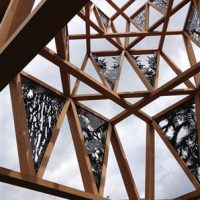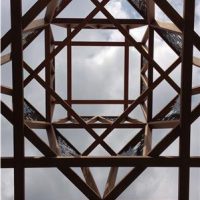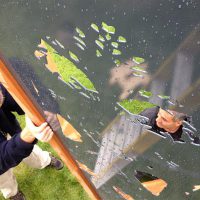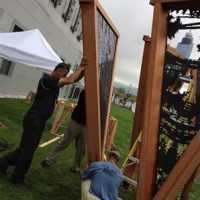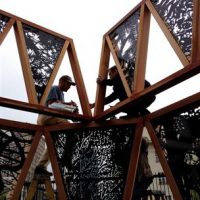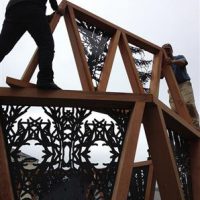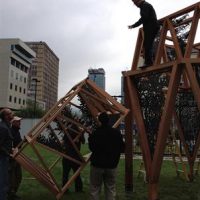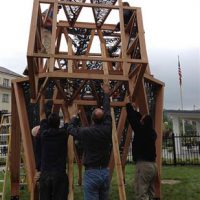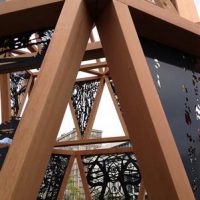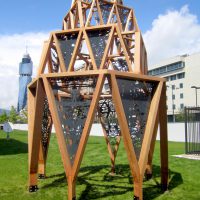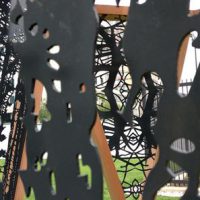In the age of the internet, new relationships happen across long distances everyday. My project, Social Structure II takes as its premise that a work of art can be the materialization of these relationships.
Knowing that I would build the piece before I could spend time in Bosnia and Herzegovina, I chose to make the project using my social network. This strategy soon evolved into the subject of the work. I began by reaching out to my network for the names of artists living in Sarajevo. After several layers of contacts, I focused on four local artists who literally would be my eyes in Bosnia.
On one weekend this past winter, each artist took on an assignment I gave them. They each made a trip into the mountains that surround Sarajevo, taking pictures of their walks in the forest. As it turned out, what I believed to be a simple assignment was far more complicated by the fact of land mines left behind from the war, which ended in 1995. From these photos posted to the web by the artists, I made drawings that were then translated into the aluminum panels of the piece.
The panels were then set into a geometric cedar structure, a form that was derived from the numbers of contacts I made along the way. The triangle, the shape at the core of the project, was chosen to reflect the complex relationship and balance of Bosnians, Serbs, and Croats that populate the city. As I stood on the site installing the structure, looking through the drawings cut into the aluminum to the forest covered mountains beyond, I found myself thinking about the way the project felt rooted in the city. While the piece remains behind in Sarajevo,I take with me a set of new relationships and a far deeper understanding of a rich and complex culture and people.
